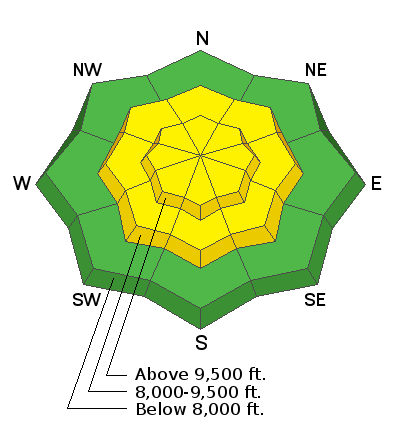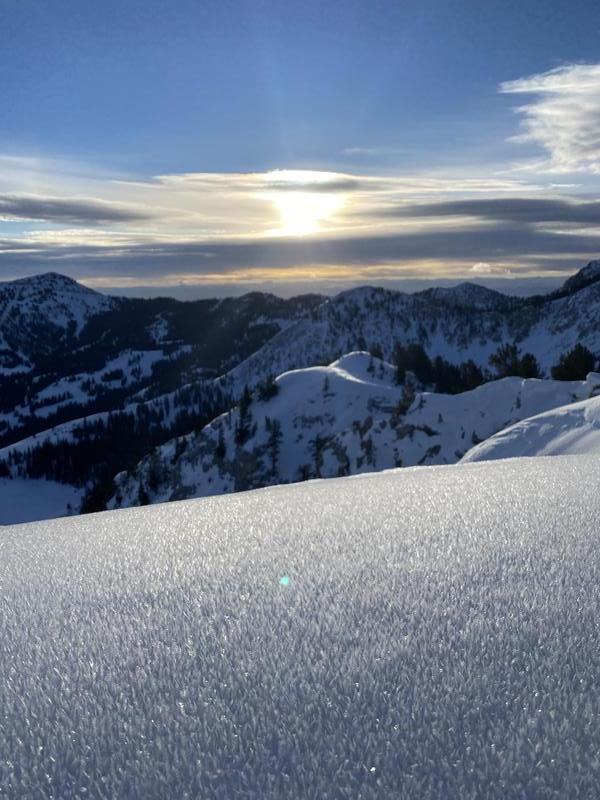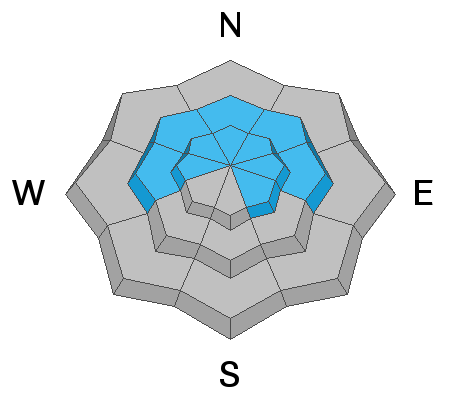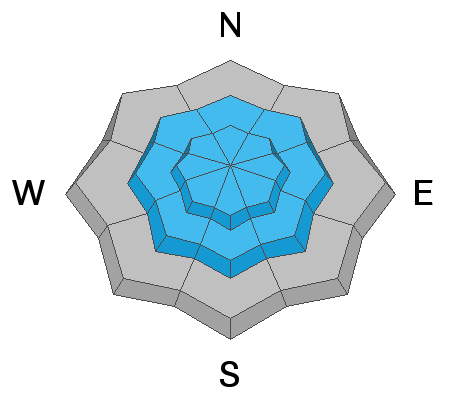Do you have the essential avalanche rescue gear (transceiver, probe, and shovel), and do you know how to use it? Watch
this video to see how the three pieces of equipment work together.
Thanks to the generous support of our local resorts, Ski Utah, and Backcountry, discount lift tickets are now available.
Support the UAC while you ski at the resorts this season. Tickets are available
here.
Temperatures this morning range through the upper teens to mid 20's F and winds are southwesterly, averaging in the teens at mid-elevations and in the 30's mph with gusts over 50 mph at 11,000'. Skies are clouding up in advance of a storm that is expected to bring a decent dose of much-needed moisture. (Yes, you read that correctly, a "storm").
For today, expect cloudy skies with temperatures rising to the upper 20's and low 30's F. Winds will be from the southwest and increasing throughout the day. At mid-elevations, winds will average in the teens with gusts in the 20's mph. Along upper-elevation ridges, winds will average in the 20's to low 30's mph, with gusts near 50 mph.
This will be a warm and wet storm on a southwest flow, meaning higher snow-densities (7% to perhaps 10%.) Snowfall should slowly begin this afternoon, and although we should expect at most an inch or two towards sunset, snowfall is expected to intensify overnight and into Saturday. This is a tricky storm to determine snowfall amounts, but in areas favored by a southwest flow (Park City mountains and upper Big Cottonwood) snowfall totals should easily exceed a foot with upwards of 1.5" of water weight by later Saturday afternoon. (Water amounts - not necessarily depth of new snow - are more important when considering how much stress storm snow places on a snowpack. If water amounts come in as forecast, this will be a significant loading event on our very-weak snowpack.)
Looking further ahead, we get a break on Sunday with another system forecasted early this coming week, and then again later in the week. Beyond that, the pattern appears (hopefully) progressive.
No avalanches were reported from the backcountry on Thursday.
Our
Week in Review - where we highlight significant weather and avalanche events from the past week -
has been published.
Many observers noticed a widespread layer of surface hoar on Thursday. [Hunter Nerison photo]












